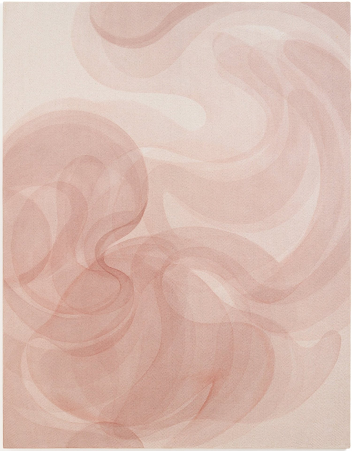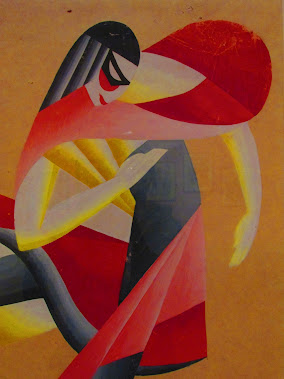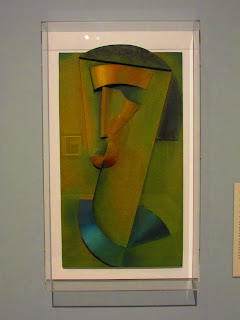"The paintings in this exhibition form part of an ongoing series of works Popova calls Post-Petrochemical paintings. Rooted in her ecological and spiritual interests, this series rejects any art materials made with products of the petrochemical industry. Eschewing traditional paints, she turns to the land to make her own pigments from soil and natural materials, a process she developed in 2016 during a year-long residency at Girton College at the University of Cambridge. Popova approaches the ritual of interacting with the earth to create pigments with a sense of reverence and awe. She describes it as an act of reappropriation of ancient material which perhaps connects the resulting work to history grounding it into deep time. The pigments used to create the paintings in this show come from soil and clay Popova collected in Dumfries, Scotland, near the mouth of the River Nith. The materials’ characteristic rich iron oxide colour helps to date them back over 250 million years to the Permian period, a time when our planet underwent a massive extinction event which paved the way for the rise of new dominant life forms. Loosely referencing myths of creation, Of Dust and Breath is an ode to the land, life and the unique interconnected imprints we leave behind as we make our way through time and place, forging and crossing paths as we and our loved ones come and go." - Ione & Mann.
My last post looked at the current exhibition at the Royal Academy featuring the work of Ukrainian artists from the beginning of the last century and their struggle to forge an artistic identity independent of that of Russia. This post takes me to a gallery not far from the RA to see an exhibition of a modern Russian painter, and I was very delighted to discover these gorgeously ethereal, amorphous abstractions by artist Yelena Popova. They instantly appealed to me, appearing to float across the canvas like traces of oxidised smoke, or perhaps shifting biological cells captured under a microscope, or even the forces which create the birth of galaxies. I think that they are even more extraordinary for being created from pigments sourced from Scottish earth by the artist which she then develops herself without the use of petrochemicals. The paintings are created by a process of Popova layering the pigment on the surface in successive washes to build tone and texture. Examining the artworks up close, one can see they are painted on heavy woven Irish linen with a densely ingrained herringbone pattern adding to the layers of texture. The natural linen ground and the natural, earthy, oxide pigments make for a complementary organic, whole. Most of the paintings are in the traditional rectangular shapes but several are in a circular format which complements the swirling painted forms contained within their surfaces. Also complementary to certain paintings are the terracotta brick-like forms and tree branches used as additional embellishments resting on or propping up the artworks. Again with the inclusion of these forms there is that sense of the artists love and respect of nature and the organic. Standing out like a sore thumb here is a graphic, black and white textile hanging, showcasing both another way of working, and another string to the artists bow. the hanging appeared slightly incongruous at first as it was in stark contrast to the other pieces on display, but its inclusion in the exhibition was justified in the sense of the animal/nature subject matter, and natural thread materials it was created from. It features a Tree of Life encircled by an Ouroboros (snake) eating its own tail, set in a landscape of stars and birds, depicting the eternal circle of life and death. I really enjoyed this exhibition. It is obvious that Popova has a deep bond with nature, and viewing the artworks brought on a much needed sense of calm and peace within me. An added bonus was that it was an absolute pleasure to meet and converse with Alkistis Koukouliou, the gallery director on my visit who took time to converse with me, informing me about the artist and her history growing up in the environment of the Ural mountains in Russia and describing Popova's working process.
Yelena Popova: Of Dust and Breath
until 7th November
Ione & Mann
6 Conduit Street
London
W1S



















































































